Common greenhouse pests: In the world of greenhouse gardening, pests are a common challenge. Let’s dive into the 22 most common greenhouse pests and how to stop them effectively.
Most Common Greenhouse Pests
Here are the 22 most common greenhouse pests:
1. Aphids
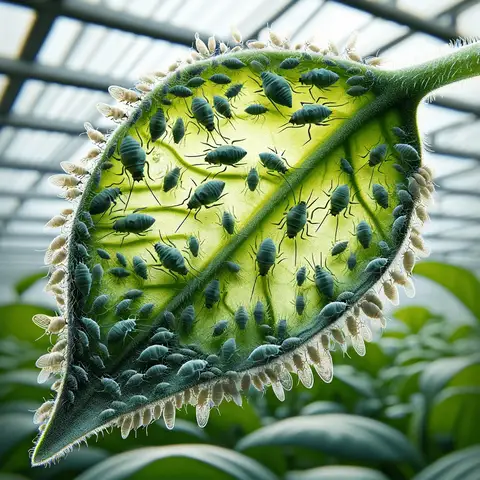
- Description: Small bugs that hang out under leaves.
- Problem: They drink the sap from plants, making leaves grow weirdly.
- How to Stop Them: Use bugs like ladybugs that eat them, or spray the plants with neem oil or special soap.
2. Spider Mites:
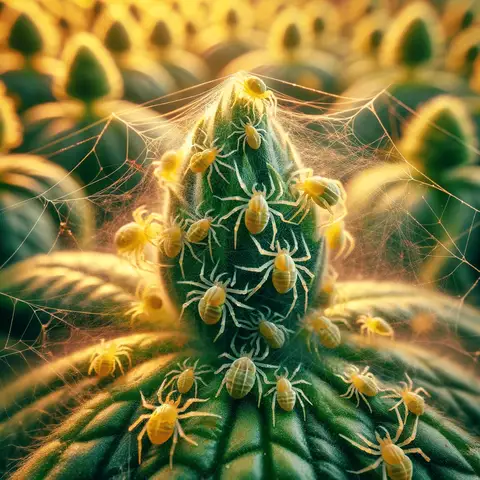
- Description: Really tiny bugs with eight legs; they spin webs.
- Problem: They feed on plant sap, which turns the leaves yellow.
- How to Stop Them: Spray with soapy water or introduce bugs that are their natural enemies.
3. Whiteflies:
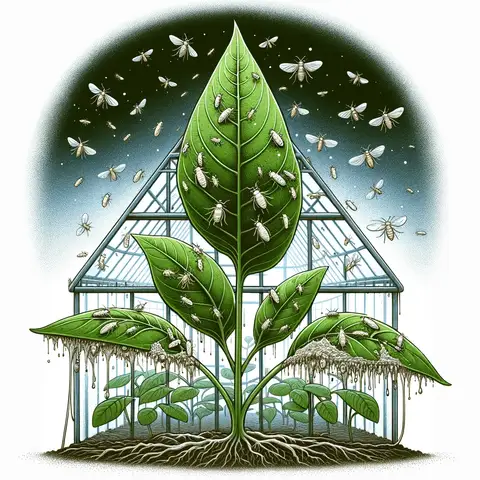
- Description: Tiny flying bugs found under leaves.
- Problem: They suck on plants and create a sticky mold.
- How to Stop Them: Spray plants with soapy water or neem oil or use beneficial bugs that hunt them.
4. Thrips:
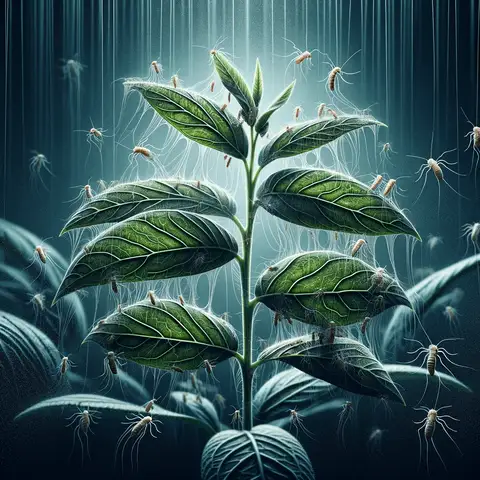
- Description: Slender bugs that damage plants.
- Problem: They cause streaks on leaves and can spread diseases.
- How to Stop Them: Use predatory mites or neem oil mixtures.
5. Fungus Gnats:

- Description: Small bugs that fly and like wet soil.
- Problem: They harm plant roots and can spread diseases.
- How to Stop Them: Let the soil dry a bit, use sticky traps, and add good nematodes to the soil.
6. Scale Insects:
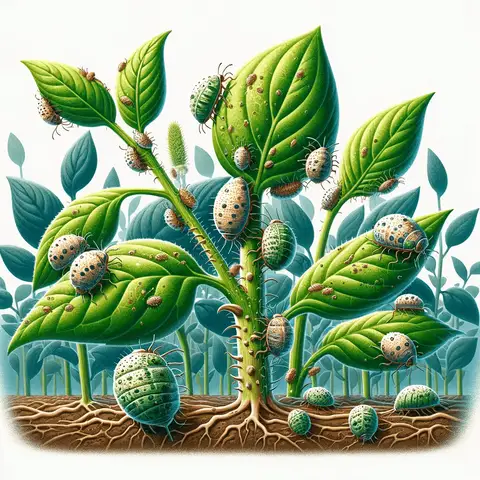
- Description: These pests stick to plants and don’t move much.
- Problem: They suck on plant sap, making leaves turn yellow.
- How to Stop Them: Clean plants with soapy water or neem oil or use natural predators.
7. Mealybugs
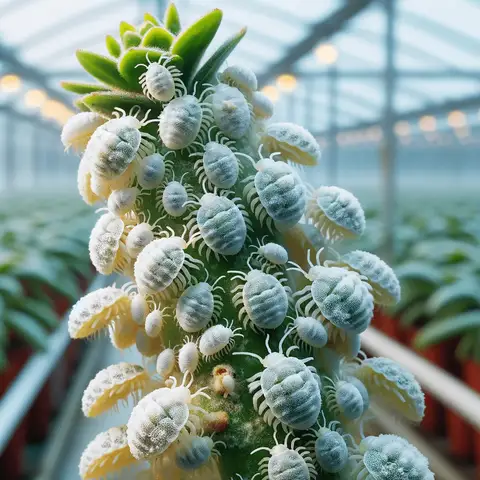
- Description: Soft-bodied insects with a waxy coating.
- Damage: Yellowing leaves and stunted growth.
- Control Methods: Introduce parasitic wasps or use neem oil.
8. Red Spider Mite
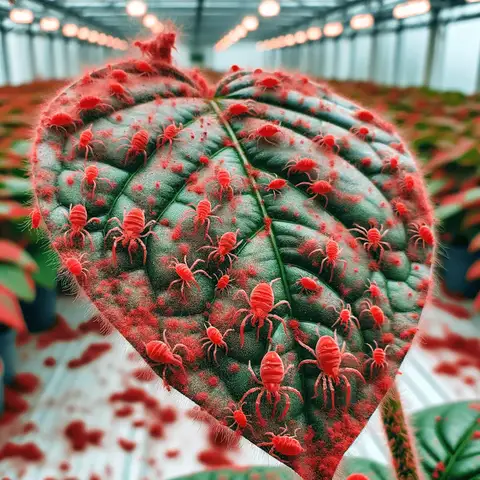
- Description: Small, red-colored mites.
- Damage: Causes leaf discoloration and damage similar to spider mites.
- Control Methods: Use miticides and maintain high humidity to deter them.
9. Caterpillar
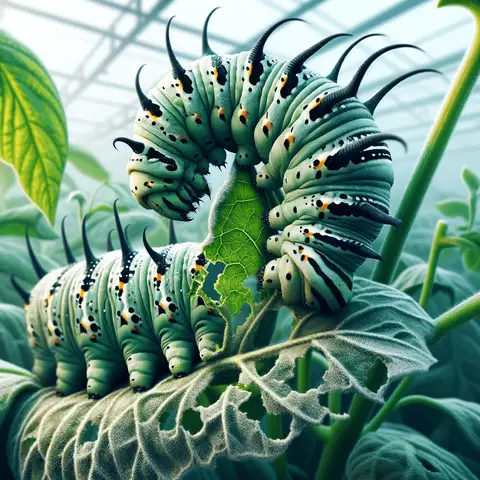
- Description: Larvae of butterflies and moths.
- Damage: Chew through leaves, leading to significant plant damage.
- Control Methods: Hand-picking, using organic pesticides, or introducing natural predators.
10. Greenhouse Whitefly
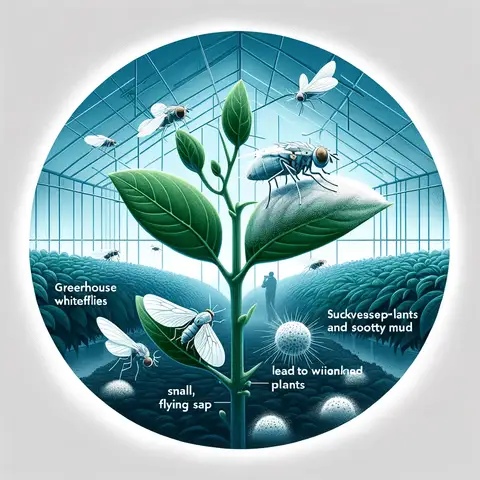
- Description: Small, white flying insects.
- Damage: Suck plant sap, leading to weakened plants and sooty mold.
- Control Methods: Insecticidal soaps, neem oil, or biological control agents.
11. Slug
- Description: Soft-bodied, legless pests.
- Damage: Eat large holes in leaves, damaging a wide variety of plants.
- Control Methods: Use slug baits, barriers, or hand-picking.
12. Earwigs
- Description: Brown or black insects with pincers.
- Damage: Chew on leaves and flowers.
- Control Methods: Traps, diatomaceous earth, or reducing their habitat.
13. Ladybugs
- Description: Beneficial beetles, often red with black spots.
- Damage: Actually beneficial, they feed on aphids and other pests.
- Control Methods: Attract them to the garden as a natural pest control measure.
14. Leafminers
- Description: Larvae of certain insects that burrow into leaves.
- Damage: Create visible tunnels in leaves.
- Control Methods: Remove infected leaves using yellow sticky traps or biological controls.
15. Shore Flies
- Description: Small, dark-colored flies.
- Damage: Breed in moist conditions and can spread diseases.
- Control Methods: Reduce moisture, use yellow sticky traps, and ensure proper ventilation.
16. Ants
- Description: Ants are those little insects we see almost everywhere.
- Damage: They make aphids, another pest, stick around for their sweet stuff, and can mess up plant roots.
- Control Methods: Use ant traps and make sure aphids don’t get out of control.
17. Snails and Slugs
- Description: Slow, slimy creatures without shells (slugs) or with shells (snails).
- Damage: They munch on plants, leaving holes.
- Control Methods: Use special slug bait barriers or pick them off.
18. Western Flower Thrips
- Description: Tiny bugs that like flowers.
- Damage: They eat flowers and can make plants sick with viruses.
- Control Methods: Bring in bug-eating mites use soap sprays, or natural controls.
19. Broad Mite
- Description: Really tiny mites you can barely see.
- Damage: They make leaves twist, and plants do not grow well.
- Control Methods: Use special sprays for mites and keep the air not too dry.
20. Net-winged Insects
- Description: Bugs with wings that look like nets.
- Damage: They eat plant parts.
- Control Methods: Watch your plants and use safe bug sprays or bugs that eat them.
21. Beetles
- Description: Bugs with hard shells.
- Damage: They eat the leaves, stems, and roots.
- Control Methods: Pick them off, use traps, or use safe sprays.
22. Fungi
- Description: They are not bugs, but they make plants sick.
- Damage: They cause lots of different diseases in plants.
- Control Methods: Keep the air moving, don’t let it get too damp, and use special plant medicine (fungicides).
How to get rid of bugs in the greenhouse?
You can actively take daily steps that can help reduce or prevent greenhouse pests. Here are 15 easy ways to get rid of bugs in your greenhouse:
- Keep It Clean: Always clean the floor and shelves, and take out dead plants. Wash pots, too.
- Bring in Bug Eaters: Use bugs like ladybugs that eat other pests.
- Sticky Traps: Hang these near plants to catch flying bugs.
- Check Your Plants: Look for pests often and act fast if you find them.
- Spray with Soaps or Oils: Use special soaps or oils that bugs don’t like.
- Don’t Overwater: Too much water brings pests.
- Different Shoes: Wear one pair inside and another outside the greenhouse.
- Shiny Mulch: It confuses and keeps away flying bugs.
- Earth and Sticky Stuff: Put these around plants to stop crawling bugs.
- Change Plants Around: Move plants to different spots to keep pests away.
- Clean New Plants: Wash new plants before putting them in.
- Vacuum: Suck up pests with a vacuum.
- Net the Windows and Doors: Stop bugs from coming in with nets.
- Open Vents: Good air stops pests.
- Keep Watching: Always be on the lookout for pests.
These tips help keep your greenhouse clean and free from pests!
Organic treatments for greenhouse pests
Organic treatments for greenhouse pests focus on using natural methods to control infestations. These include:
- Neem Oil: This is a special oil from the neem tree. It’s really good at stopping lots of different bugs.
- Soapy Water: Spraying plants with soapy water can help get rid of bugs like aphids and spider mites.
- Good Bugs: Some bugs are helpful! Ladybugs eat bad bugs like aphids.
- Diatomaceous Earth: This is a powder that hurts bugs when they crawl over it.
- Plant Oils: Oils from some plants, like peppermint, can keep bugs away.
- Smart Gardening: Doing things like changing where you plant stuff and not overwatering helps keep bugs away.
These ways are safe for the plants, good bugs, and the earth!
When and how to use chemical pesticides
Using chemical pesticides in a greenhouse should be approached with caution and as a last resort after other methods have been tried.
Here’s a way to understand when and how to use chemical pesticides in a greenhouse:
When to Use Them:
- Lots of Pests: Use them if there are too many pests and other methods don’t work.
- Fast Action Needed: If you need to act quickly to stop the pests from causing a lot of damage.
How to Use Them:
- Know Your Pest: Make sure you know what pest you’re dealing with.
- Read Instructions: Always read and follow what the bottle says.
- Be Careful: Put the pesticide only where the pests are.
- Stay Safe: Wear safety gear and make sure there’s fresh air.
- Right Time: Use pesticides when good bugs aren’t around.
- Follow the rules: Make sure you’re using the pesticide the right way according to the law.
Checking your plants often and trying other ways to stop pests should be your first plan, with chemicals as a backup.
FAQs About Greenhouse Pests
What are the most common pests found in greenhouses?
Common greenhouse pests include aphids, spider mites, whiteflies, and other small bugs.
How do I stop bugs in my greenhouse?
Keep it clean, don’t water too much, and check your plants a lot.
Do I need bug spray?
Only sometimes. Try using good bugs that eat the bad ones, or use safe soaps.
Can too much water bring more bugs?
Yes, bugs like wet places.
What if I see bugs?
Find out what bug it is, keep it away from other plants, and then treat it.
Are some plants good at keeping bugs away?
Yes, plants like marigolds can help keep bugs away.













